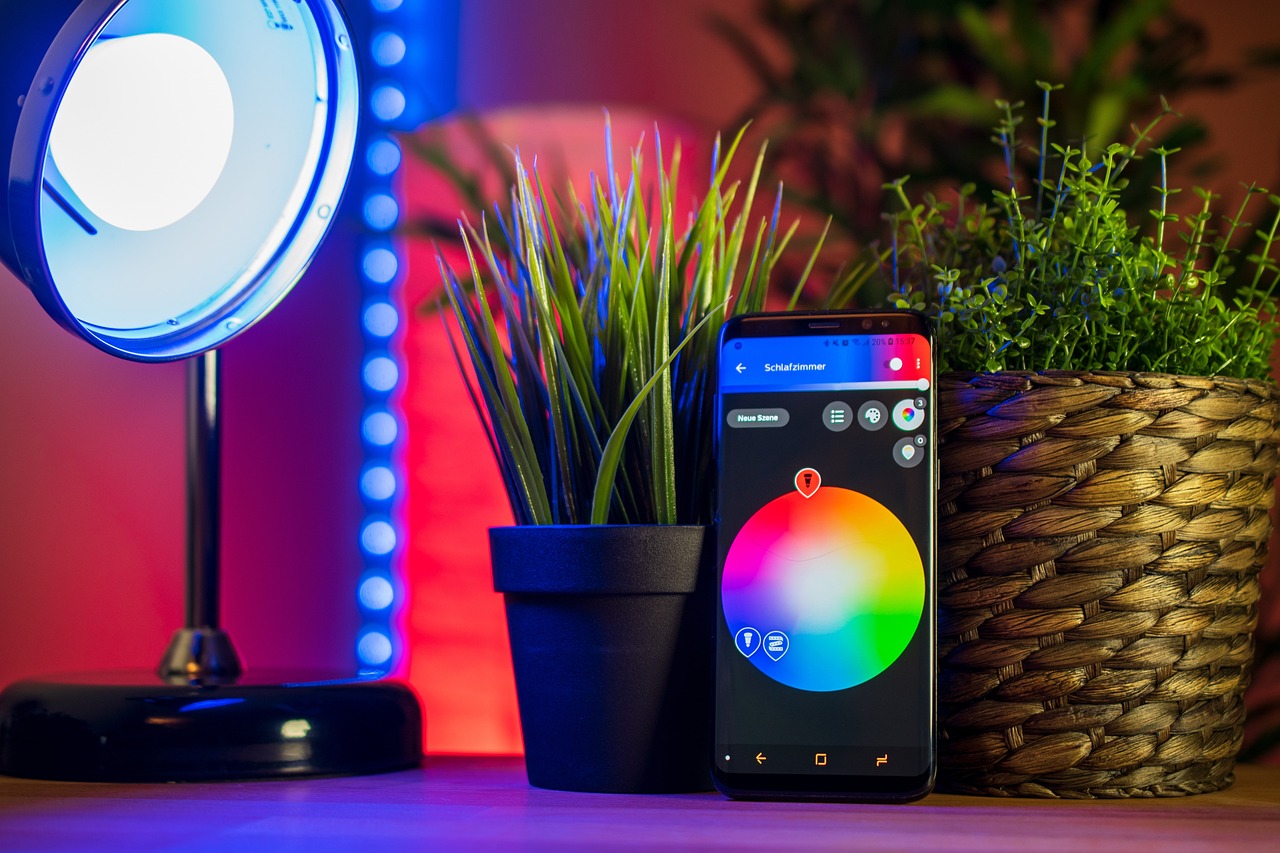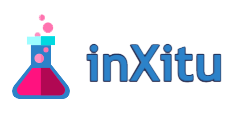Planning Your Smart Home
Creating a fully automated smart home begins with thorough planning. This crucial step ensures that your smart home system aligns with your lifestyle, preferences, and specific needs. By taking the time to plan effectively, you can avoid costly mistakes, ensure compatibility between devices, and create a seamless automated experience that truly enhances your daily life.
Assessing Your Needs
Before diving into the world of smart home technology, it’s essential to identify the primary areas and functions you want to automate. This assessment will guide your device selection and help prioritize your investments.
Common automation areas to consider:
- Lighting: Smart bulbs, switches, and sensors for automated and mood lighting
- Security: Cameras, smart locks, and alarm systems for enhanced home protection
- Climate Control: Smart thermostats and HVAC integration for optimal comfort and energy efficiency
- Entertainment: Smart TVs, speakers, and streaming devices for immersive experiences
- Kitchen Appliances: Smart refrigerators, ovens, and coffee makers for convenient cooking and food management
- Energy Management: Smart plugs and energy monitoring systems for reduced power consumption
- Voice Control: Smart speakers and voice assistants for hands-free operation
Setting a Budget
Establishing a realistic budget is crucial for your smart home project. Costs can vary widely depending on the devices you choose and the extent of automation you desire. Consider both initial costs and potential long-term savings from increased energy efficiency.
| Device Category | Entry-Level Cost | Mid-Range Cost | High-End Cost |
|---|---|---|---|
| Smart Hub | $50 – $100 | $100 – $200 | $200+ |
| Smart Bulbs (pack of 4) | $30 – $60 | $60 – $120 | $120+ |
| Smart Thermostat | $80 – $150 | $150 – $250 | $250+ |
| Smart Security Camera | $50 – $100 | $100 – $200 | $200+ |
| Smart Lock | $100 – $150 | $150 – $250 | $250+ |
| Smart Speaker | $30 – $50 | $50 – $150 | $150+ |
Remember to factor in potential installation costs, especially for devices that require professional installation, such as smart thermostats or comprehensive security systems.
Choosing the Right Smart Home Ecosystem

Selecting a compatible and comprehensive ecosystem is crucial for creating a seamless smart home experience. The right ecosystem will serve as the foundation for your smart home, ensuring that all your devices can communicate effectively and be controlled from a central platform.
Comparing Ecosystems
The three most popular smart home ecosystems are Amazon Alexa, Google Home, and Apple HomeKit. Each has its strengths and limitations, so it’s important to compare them based on your specific needs and the devices you plan to use.
| Ecosystem | Voice Assistant | Device Compatibility | Ease of Use | Smart Home Integration |
|---|---|---|---|---|
| Amazon Alexa | Alexa | Extensive | Very Easy | Excellent |
| Google Home | Google Assistant | Very Good | Easy | Very Good |
| Apple HomeKit | Siri | Limited but Growing | Moderate | Good |
Amazon Alexa offers the widest range of compatible devices and is known for its ease of use. It’s an excellent choice for those who want a versatile system with extensive third-party support.
Google Home provides robust integration with Google services and has a powerful voice assistant. It’s ideal for users already invested in the Google ecosystem.
Apple HomeKit focuses on security and privacy but has a more limited selection of compatible devices. It’s best suited for Apple enthusiasts who prioritize a seamless experience across Apple products.
Ensuring Compatibility
To create a truly automated smart home, it’s crucial to ensure that all your devices are compatible with your chosen ecosystem. This compatibility allows for seamless integration and enables you to control multiple devices through a single app or voice command.
Tips for checking device compatibility:
- Look for the ecosystem logo on product packaging or descriptions (e.g., “Works with Alexa” or “HomeKit compatible”)
- Check the manufacturer’s website for compatibility information
- Read user reviews to understand real-world compatibility experiences
- Use the ecosystem’s official app to search for compatible devices
- Consider using a hub that bridges different protocols (e.g., Zigbee, Z-Wave) to expand compatibility
Avoid common pitfalls by:
- Researching before purchasing to ensure full functionality within your chosen ecosystem
- Checking if the device requires a separate hub or bridge for operation
- Verifying that your home’s Wi-Fi network can support the number of devices you plan to connect
- Ensuring your smartphone or tablet is compatible with the ecosystem’s control app
Essential Smart Home Devices
A fully automated smart home relies on a variety of interconnected devices working together seamlessly. By integrating these devices, you can create a home that responds to your needs, enhances your comfort, and improves energy efficiency. Let’s explore some of the essential smart home devices that form the backbone of a comprehensive automation system.
Smart Lighting
Smart lighting is often the entry point for many homeowners into the world of home automation. These systems offer convenience, energy savings, and the ability to create customized lighting scenes for different moods or activities.
Benefits of smart lighting systems:
- Energy Efficiency: Automatically turn off lights when rooms are unoccupied
- Customization: Adjust brightness and color temperature to suit your preferences
- Convenience: Control lights via smartphone app or voice commands
- Security: Simulate occupancy when you’re away from home
- Mood Setting: Create pre-set scenes for different activities or times of day
Popular smart lighting options:
- Philips Hue: Offers a wide range of bulbs and fixtures with excellent color options
- LIFX: Known for bright, vibrant colors and no need for a separate hub
- Sengled: Budget-friendly option with good integration capabilities
- Lutron Caséta: Focuses on in-wall switches and dimmers for whole-home lighting control
- Nanoleaf: Specializes in decorative light panels for creative lighting designs
Smart Security Systems
Enhancing home security is a top priority for many homeowners, and smart security systems offer advanced features that go beyond traditional alarm systems. These systems can provide real-time monitoring, remote access, and integration with other smart home devices for a comprehensive security solution.
| Feature | Description | Benefit |
|---|---|---|
| Smart Cameras | High-resolution video with night vision and two-way audio | Monitor your property in real-time and communicate with visitors |
| Smart Locks | Keyless entry with temporary access codes | Control access to your home remotely and track who comes and goes |
| Motion Sensors | Detect movement in and around your home | Receive alerts when unexpected activity is detected |
| Door/Window Sensors | Monitor the status of entry points | Be notified if a door or window is opened unexpectedly |
| Smart Doorbells | Video-enabled doorbells with motion detection | See and speak with visitors even when you’re not home |
Top smart security systems:
- Ring Alarm: Offers affordable DIY installation and integrates well with other Ring devices
- SimpliSafe: Provides professional monitoring without long-term contracts
- Nest Secure: Seamlessly integrates with other Nest and Google Home devices
- Abode: Offers flexible monitoring options and wide third-party device support
- Arlo: Known for high-quality wireless cameras with advanced AI features
Smart Thermostats
Smart thermostats are a cornerstone of home automation, offering significant energy savings and improved comfort through intelligent climate control. These devices learn your preferences and routines, automatically adjusting temperature settings for optimal efficiency.
Key features of smart thermostats:
- Learning Capabilities: Adapt to your schedule and preferences over time
- Remote Control: Adjust temperature settings via smartphone app
- Energy Reports: Provide insights into energy usage and savings
- Geofencing: Automatically adjust settings based on your location
- Multi-Zone Control: Manage different temperature zones in your home
- Integration: Work with other smart home devices for coordinated automation
Leading smart thermostats:
- Nest Learning Thermostat: Known for its learning capabilities and sleek design
- ecobee SmartThermostat: Offers built-in Alexa voice control and remote sensors
- Honeywell Home T9: Features multi-room sensors for precise temperature control
- Emerson Sensi Touch: Provides easy installation and compatibility with most HVAC systems
- Tado Smart Thermostat: Excels in geofencing and open window detection
For more information on the energy-saving potential of smart thermostats, check out the U.S. Department of Energy’s guide on programmable and smart thermostats.
Integrating and Automating Your Smart Home

The true power of a smart home lies in the seamless integration and automation of various devices. By connecting your smart devices and creating automated routines, you can transform your living space into a responsive environment that anticipates your needs and enhances your daily life.
Setting Up a Central Hub
A central hub acts as the brain of your smart home, allowing different devices to communicate with each other and enabling centralized control. While some ecosystems like Apple HomeKit can function without a dedicated hub, having one can significantly enhance the capabilities and responsiveness of your smart home.
Options for central hubs:
- Amazon Echo (with built-in hub): Ideal for Alexa-based systems, supports Zigbee devices
- Google Nest Hub: Perfect for Google Home ecosystems, offers a touch screen interface
- Apple HomePod mini: Serves as a hub for HomeKit devices, emphasizing privacy and security
- Samsung SmartThings Hub: Supports multiple protocols, offering wide device compatibility
- Hubitat Elevation: Local processing for faster response times and enhanced privacy
Advantages of using a central hub:
- Unified Control: Manage all devices from a single interface
- Enhanced Automation: Create more complex routines involving multiple devices
- Improved Reliability: Reduce dependence on cloud services for device communication
- Expanded Compatibility: Connect devices using different protocols (e.g., Zigbee, Z-Wave)
- Offline Functionality: Maintain some smart home features even without internet connectivity
Creating Automation Routines
Automation routines are the key to making your smart home truly “smart.” These routines allow you to program your devices to work together and respond to various triggers, creating a personalized and efficient living environment.
| Routine Name | Trigger | Actions | Benefits |
|---|---|---|---|
| Good Morning | Time (e.g., 7 AM) or voice command | 1. Gradually increase bedroom lights<br>2. Raise smart blinds<br>3. Start coffee maker<br>4. Play news briefing | Gentle wake-up experience and streamlined morning routine |
| Leaving Home | Geofencing (when you leave the area) | 1. Turn off all lights<br>2. Set thermostat to energy-saving mode<br>3. Arm security system<br>4. Close garage door | Energy savings and enhanced security |
| Movie Night | Voice command or app button | 1. Dim living room lights<br>2. Lower smart blinds<br>3. Turn on TV and sound system<br>4. Set thermostat to comfortable temperature | Instant ambiance creation for entertainment |
| Bedtime | Time or voice command | 1. Turn off all non-essential lights<br>2. Lock all smart locks<br>3. Arm security system<br>4. Set thermostat to night mode | Secure and comfortable sleeping environment |
Tips for creating effective automation routines:
- Start with simple routines and gradually increase complexity
- Consider different triggers (time, location, device state, voice commands)
- Test routines thoroughly to ensure they work as expected
- Regularly review and adjust routines based on your changing needs
- Use conditions to make routines more flexible (e.g., only run if someone is home)
Troubleshooting and Maintenance
To ensure your smart home continues to function smoothly, regular maintenance and effective troubleshooting are essential. By staying proactive and addressing issues promptly, you can maintain an efficient and reliable automated home environment.
Regular Maintenance Tips
Keeping your smart home devices in good working order requires some routine care and attention. Here are some maintenance tips for various smart devices:
- Smart Hubs and Routers:
- Restart monthly to clear cache and refresh connections
- Keep firmware updated
- Check and optimize device placement for best coverage
- Smart Cameras and Doorbells:
- Clean lenses regularly
- Check and replace batteries in wireless devices
- Verify Wi-Fi signal strength at device locations
- Smart Thermostats:
- Replace batteries annually (if applicable)
- Clean the display and check for obstructions
- Verify temperature accuracy with a separate thermometer
- Smart Locks:
- Lubricate moving parts annually
- Replace batteries every 6-12 months
- Test manual key operation periodically
- Smart Lights:
- Dust bulbs and fixtures regularly
- Check for software updates in the app
- Verify dimmer compatibility for optimal performance
Troubleshooting Common Issues
Even with regular maintenance, you may encounter issues with your smart home devices. Here’s a troubleshooting guide for typical smart home problems:
| Issue | Possible Causes | Solutions |
|---|---|---|
| Device not responding | • Wi-Fi connectivity issues<br>• Power problems<br>• App glitches | 1. Check Wi-Fi connection<br>2. Restart the device<br>3. Verify power source<br>4. Update app and firmware<br>5. Remove and re-add device to app |
| Automation routine not working | • Conflicting routines<br>• Incorrect setup<br>• Device offline | 1. Review routine settings<br>2. Check device status<br>3. Verify trigger conditions<br>4. Disable and re-enable the routine |
| Voice commands not recognized | • Poor microphone pickup<br>• Incorrect wake word<br>• Voice assistant issues | 1. Move closer to the device<br>2. Check wake word settings<br>3. Retrain voice model<br>4. Restart voice assistant device |
| Slow response times | • Network congestion<br>• Too many connected devices<br>• Outdated firmware | 1. Optimize Wi-Fi network<br>2. Reduce number of connected devices<br>3. Update device firmware<br>4. Consider a mesh Wi-Fi system |
| Security concerns | • Weak passwords<br>• Outdated software<br>• Unsecured network | 1. Use strong, unique passwords<br>2. Enable two-factor authentication<br>3. Keep all devices updated<br>4. Secure your Wi-Fi network |
For more advanced troubleshooting and security tips, consider consulting the Smart Home Security Guide provided by the Cybersecurity and Infrastructure Security Agency (CISA).
Conclusion
Creating a fully automated smart home is an exciting journey that can significantly enhance your daily life, improve energy efficiency, and boost home security. By following the steps outlined in this guide, you can build a comprehensive smart home system tailored to your needs and preferences.
Key takeaways for creating a fully automated smart home:
- Plan Thoroughly: Assess your needs and set a realistic budget before starting your smart home project.
- Choose the Right Ecosystem: Select a smart home ecosystem that aligns with your devices and preferences.
- Invest in Essential Devices: Start with core smart home devices like lighting, security systems, and thermostats.
- Integrate and Automate: Use a central hub and create automation routines to maximize the benefits of your smart home.
- Maintain and Troubleshoot: Regularly maintain your devices and be prepared to troubleshoot common issues.
- Prioritize Security: Keep your smart home secure by using strong passwords, updating firmware, and following best practices.
- Stay Flexible: Be open to adjusting your smart home setup as your needs change and new technologies emerge.
Remember that building a smart home is an ongoing process. As you become more comfortable with the technology and discover new possibilities, you can continue to expand and refine your system. With patience and creativity, you’ll soon be enjoying the convenience, efficiency, and comfort of a fully automated smart home tailored to your lifestyle.

